JOINT MULTINATIONAL READINESS CENTER, Germany - The Geroldsee Shoothouse here has an echo, but it doesn't work for just one person.
To get the full effect, the building has to be filled with about 20 Soldiers from H Company, 2nd Battalion, Royal Canadian Regiment Battle Group. As they pour into one room after another in four-man teams, whatever a Soldier says is instantly repeated down the hallways, through other rooms and ultimately out the double-door entrance and into the surrounding yard just as loud as it had begun. Those pulling guard outside the shoothouse can hear sentences such as, "One friendly coming out!" as clearly as those standing next to the section leader doing the shouting from the concrete building's center.
This echo doesn't reverberate off the black-painted walls, steel-plate-reinforced doors, or the mannequins awaiting within though. It is passed on from Soldier to Soldier, each one repeating what he hears as soon as he hears it - sometimes doing it so quickly and so loudly that the syllables overlap with others in the platoon.
There can be no doubt that each and every member of the platoon is fully aware of what is happening with his fellows at any given time ... a key safety feature in live-fire training, according to Canadian Army Lt. Chad S. Thain, 4th platoon commander, 2nd Battalion, Royal Canadian Regiment.
"It's fast and furious in there," he said. "Personally, I'm trying to filter the communication: what needs to go higher and what I can respond to. If a Soldier needs medical attention, the faster that information gets to higher commands the faster help becomes available.
"The best part is getting to watch my squads in action. They are moving through methodically, demonstrating effective communication, engaging targets and covering each other. It's a complicated objective," he added. "Something we've not done before as a team."
Many of the 2nd Bn. RCR are relatively new to the unit. The posting season when they get new troops is from summer to summer, which means many of them only have a few months of experience, according to Maj. Kyle Keffer, officer commanding of the H Company, 2nd RCR Battle Group. As an optimized battle group, Keffer not only leads the infantry company, but also all the attachments they are authorized to be completely ready for battle.
"Coming together as a team has been the biggest challenge," Keffer said. "We have a lot of new Soldiers who haven't worked together before. We have 24 activated reservists we've added on. They've been doing very well though, and I'm quite pleased with what we've seen to this point. They've progressed through a developed live-fire on a zero-templated range. We set up ranges like this in Canada, but nothing permanent. So it's quite special to bring the unit up through the tasks to conclude with a live fire."
The 2nd Bn. RCR's live-fire Military Operations in Urban Terrain is just one part of a five-nation mission here. The American, British, Canadian, Australian and New Zealand Armies Program has strived for complete interoperability since the days following World War II, and Cooperative Spirit '08 is the latest in a long line of exercises dedicated to compatible equipment and synchronized battle tactics like those practiced at the shoothouse. U.S. Army observer controllers stationed at the JMRC monitor and supervise the training to provide the Canadian Soldiers with guidance and standard operating procedures they don't normally get to learn.
"We get to see the other nations' drills and SOPs and see how they react," Thain said. "It may not be what we are used to, but it's the chance for our Soldiers to adjust to the situation and use their innovation."
"At higher levels of joint interoperability, the chance to work with the Americans, British, Australians and New Zealanders is the opportunity of a lifetime," Keffer added. "We train quite a bit with the U.S., and some with the British, but not like this. The only time we operate at this level of Coalition environment is when it's the real thing -- war. Here, it's a training venue where we can interact."
The Canadian Soldiers drove out to the range on one of the many tank trails that the JMRC has to offer, creating a staging point about half a kilometer east of their objective. They then took turns going through the "kill house," as so many called it, platoon by platoon. The first two runs were with blank ammunition, with the observer controllers picking out people to be casualties in need of evacuation. The third rotation was a live-fire, and a fourth rotation with blank ammunition again was held after night fall.
"We've been working and drilling to create a team, so that instead of reacting to others movements we can proactively claim the objective," Thain said. "You don't need to react to what the Soldier next to you is doing, you know what he is going to do and you know what you need to do."
Some rooms of the shoothouse were empty, some rooms contained unarmed mannequins to represent civilians and some rooms contained dummies armed with Styrofoam weapons to indicate their hostile intent. Soldiers have to react quickly while being able to distinguish clear threats from innocent people in the blink of an eye.
"(The JMRC) has done good work training up the new guys, and now they'll be one more step ahead during a deployment," said Cpl. Kyle Parker, an infantryman with 4th Platoon who is normally a Land Assault Vehicle driver, but the Canadians were loaned High Mobility, Multipurpose Wheeled Vehicles from the U.S. for the training event. "Having been to Afghanistan (in 2007), the training seems to be very similar to what I saw there. It's very realistic."
The training may be intense and the pace grueling, but Keffer said that it would pay large dividends in the long run. These platoon-level training events, often referred to as "sticks lanes," will lead up to company-level training sessions and then battalion-level activities. The culmination of Cooperative Spirit will be when the entire brigade combat team enters a simulated combat, with U.S. Soldiers from the area playing opposing forces, a Multi-Integrated Laser Engagement System sorting out casualties ala laser tag, and a battalion from each nation in ABCA still falling under the 3rd Stryker Brigade, 2nd Infantry Division from Fort Lewis, Wash.
"I'm looking forward to being given a task and facing the challenge with the company and achieving it," he said. "The training developments have given the platoons the time they need to focus on themselves. I'll get my time to focus on the company. Even at the battalion and brigade level, the tasks will be dealt out at the company level; I'm looking forward to that. It'll be a free-flowing exercise, not as structured as the sticks lanes we've done so far."
While the Soldiers weren't able to see the footage captured by the video cameras positioned in each room of the shoothouse just yet, it will be one of the features of the "take home" package that JMRC is scheduled to provide to every unit in Cooperative Spirit 2008. Even without a televised play-by-play though, it seems evident that the 2nd Battalion is capitalizing on ABCA's multinational training.


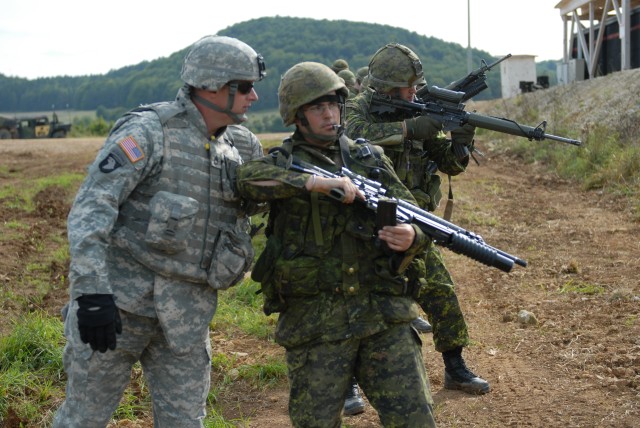

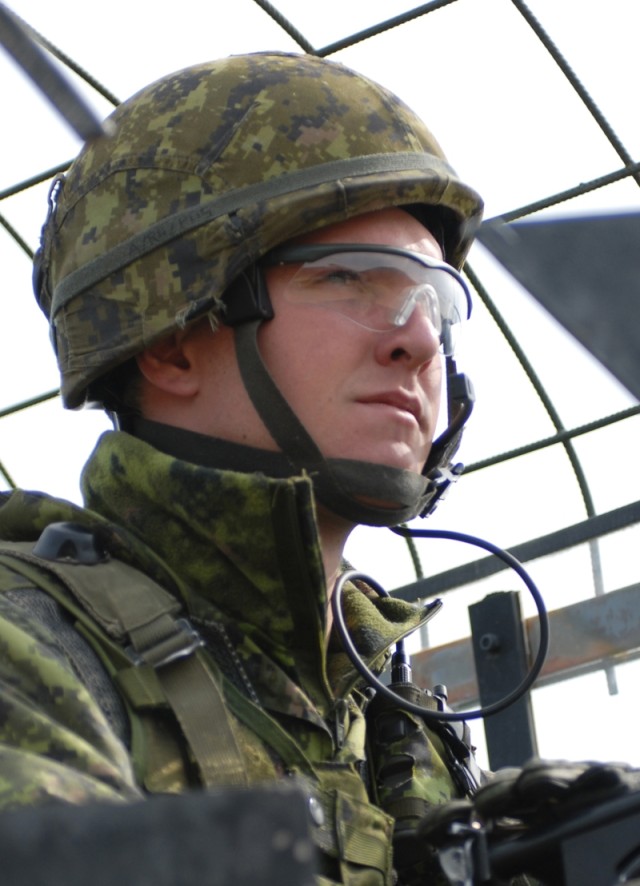
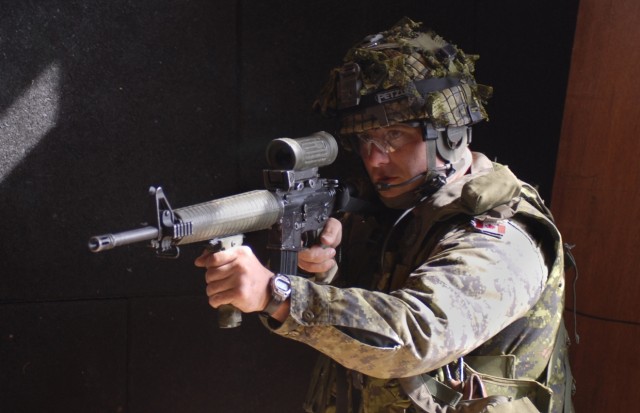

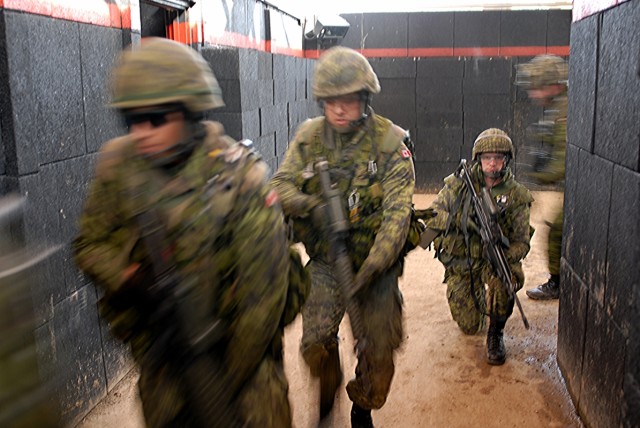
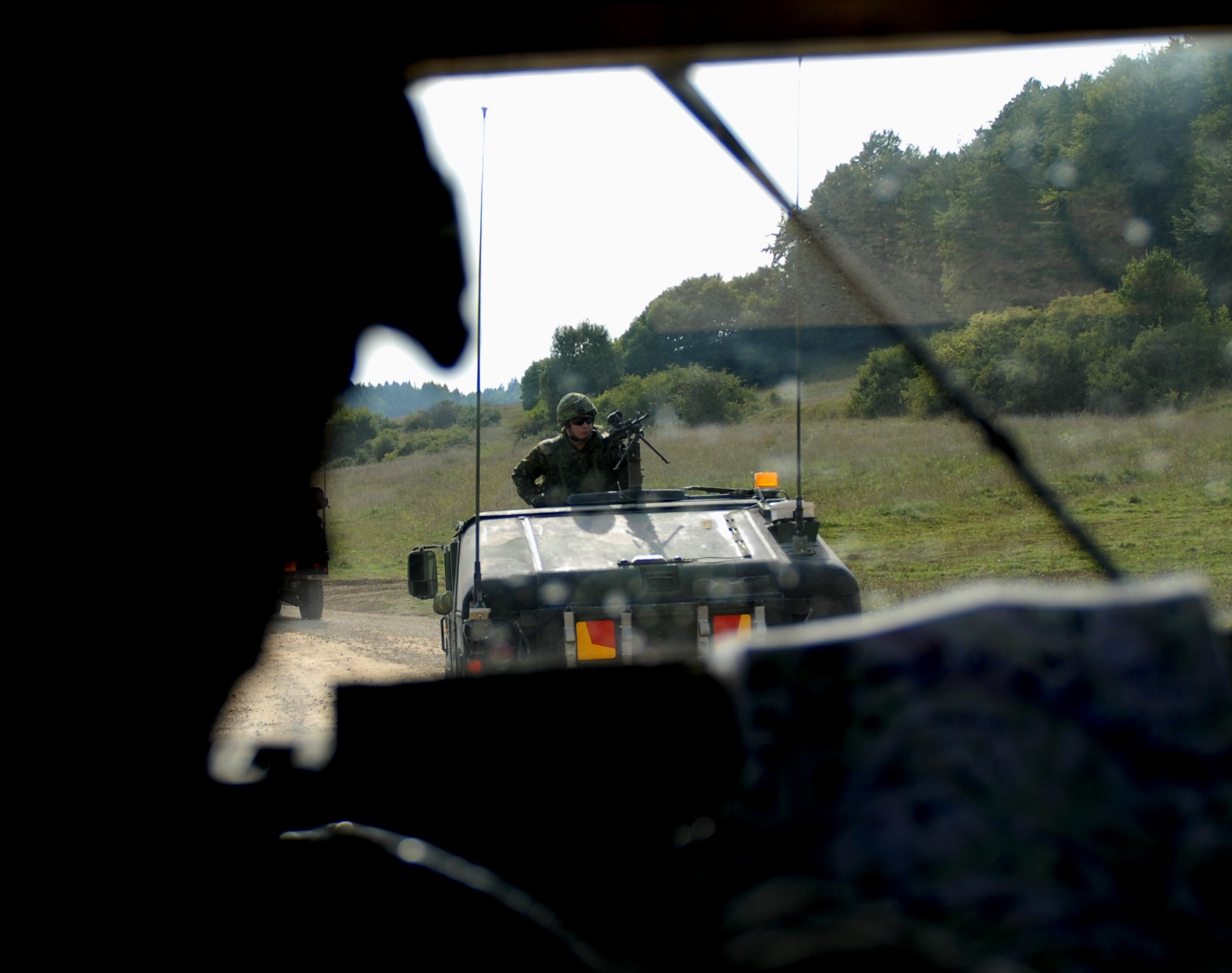
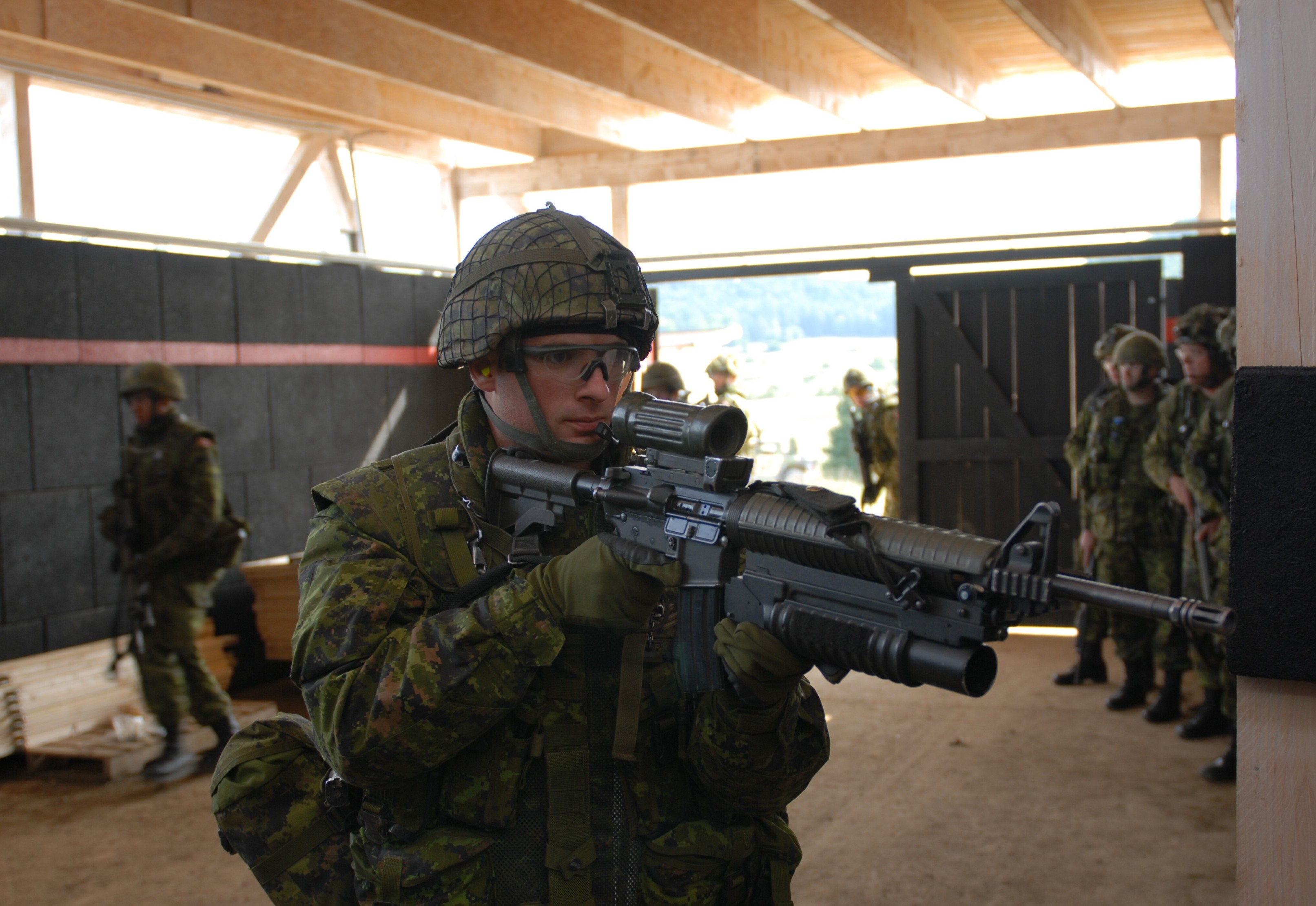
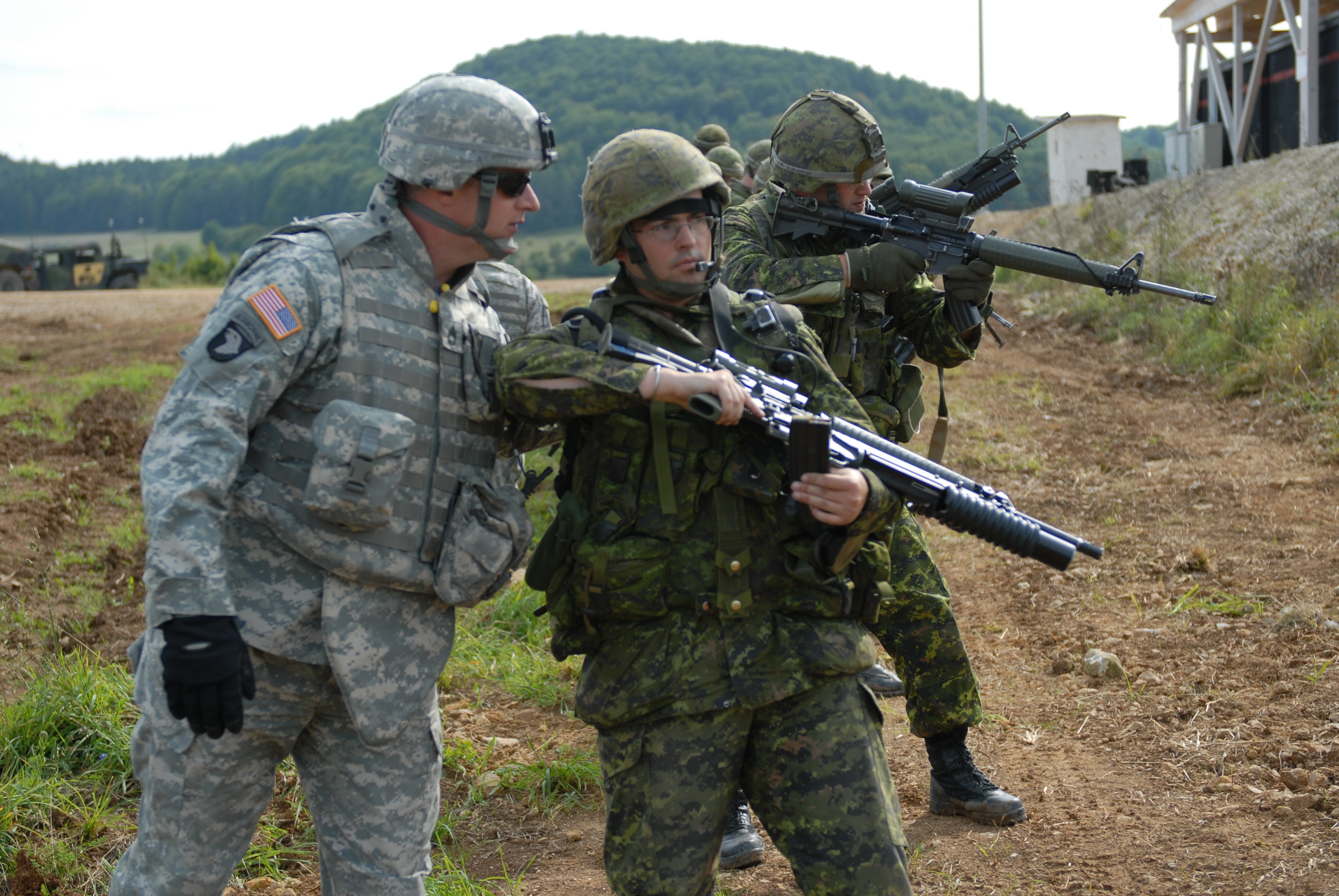

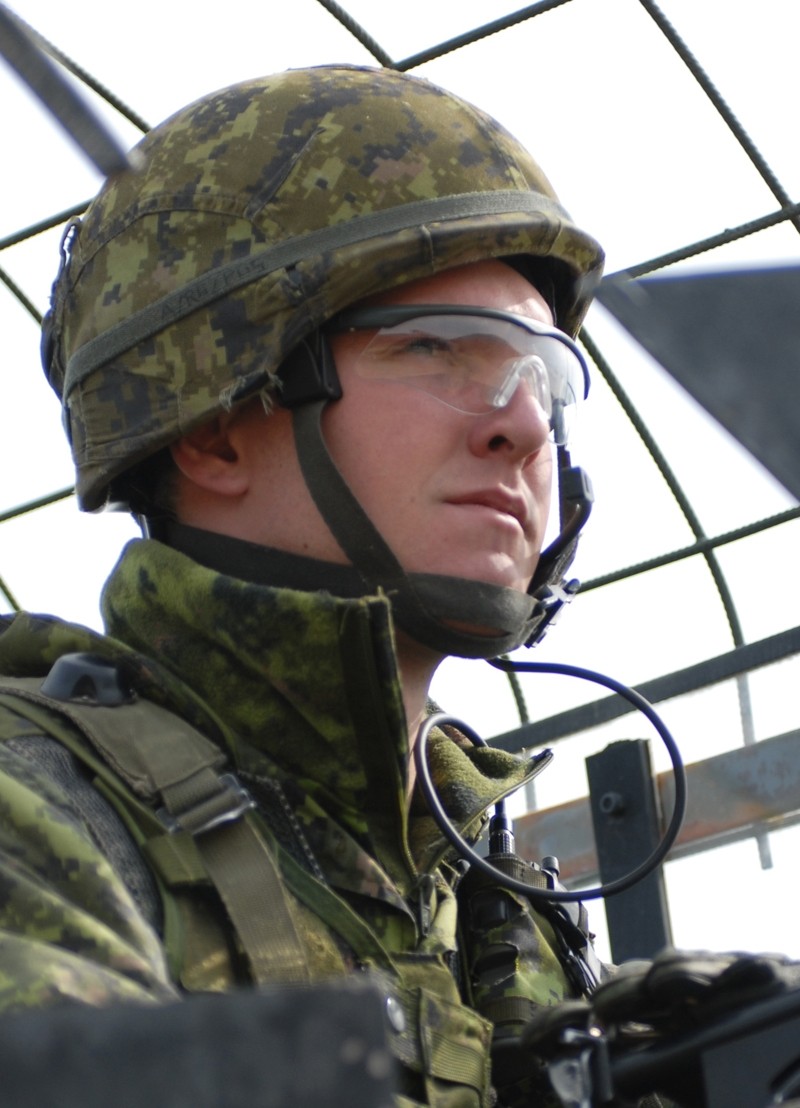
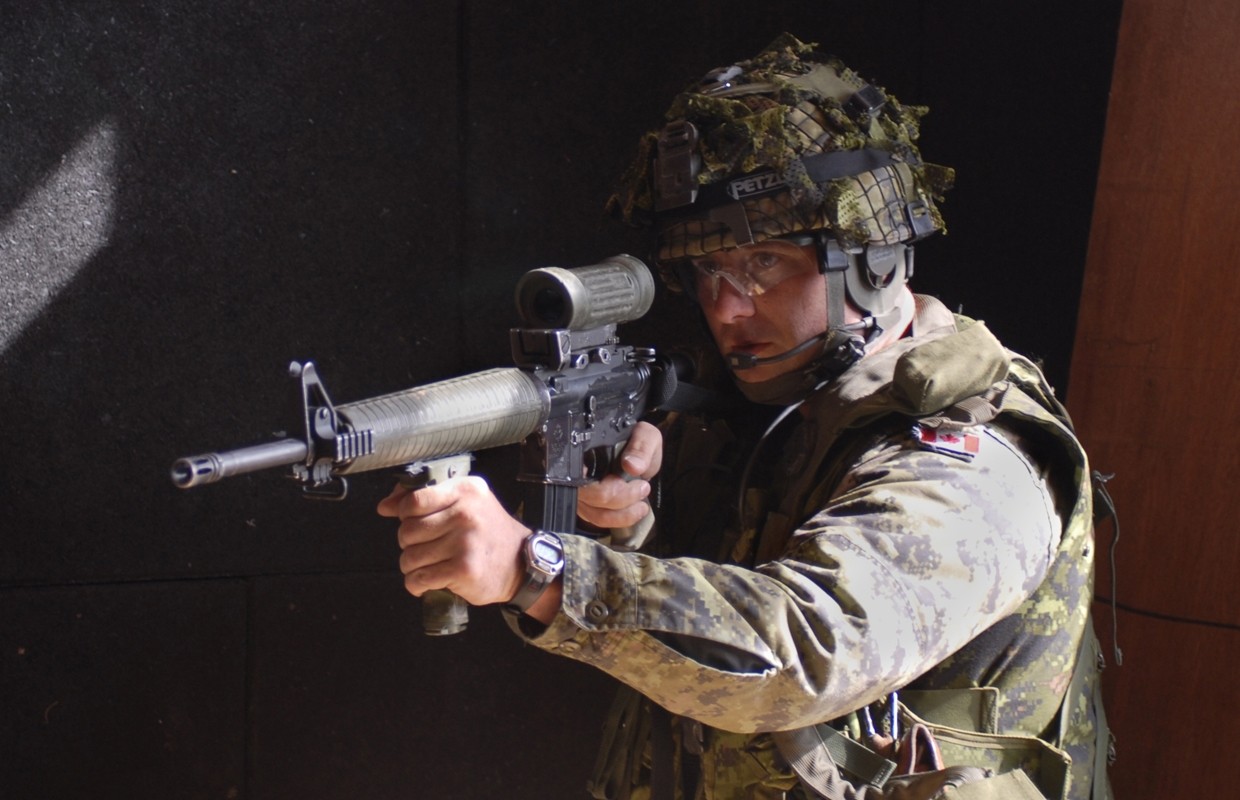

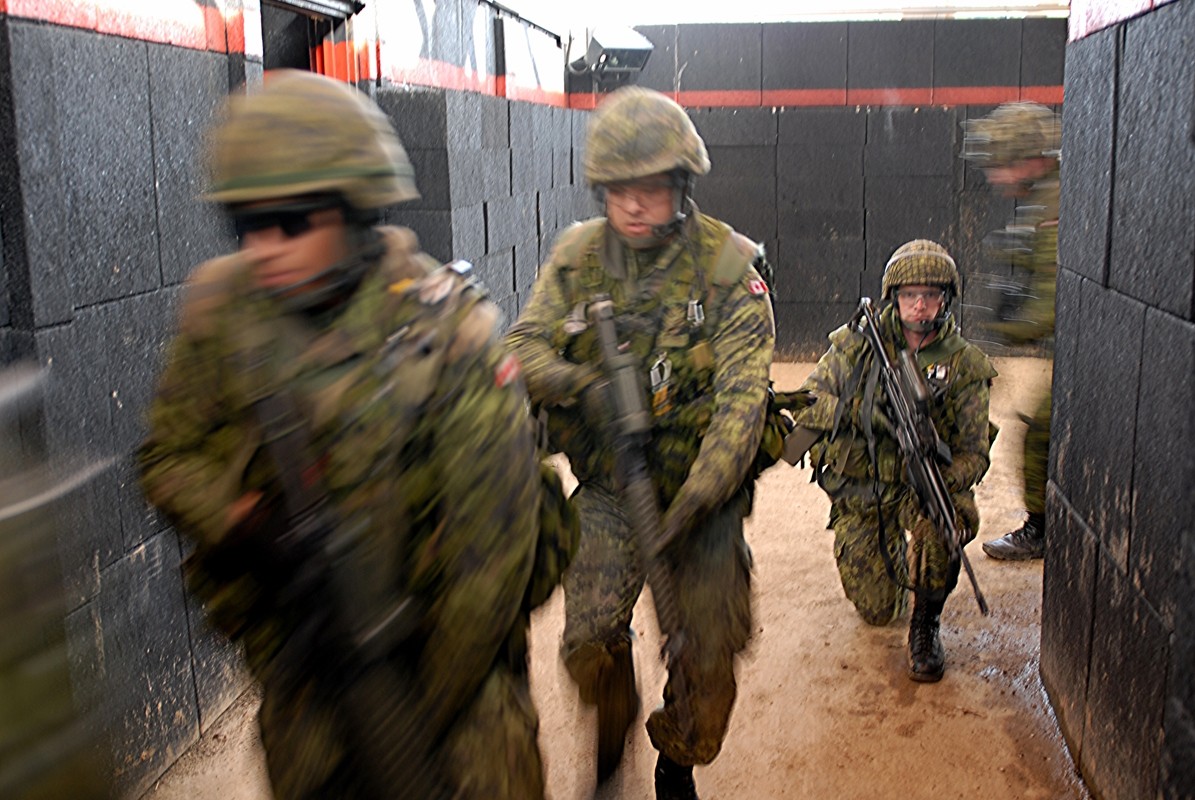
Social Sharing